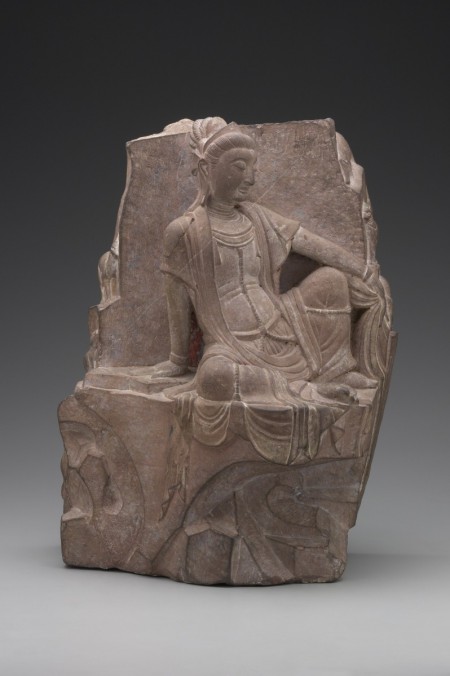India, Bihar or Bengal, Pala period, late 11th–early 12th century; schist; 37 1/2 x 18 1/2 x 6 3/4 in.; Asia Society, New York, Mr. and Mrs. John D. Rockefeller 3rd Collection, 1979.40, photo: Lynton Gardiner, Courtesy of Asia Society, New York.
Seated Guanyin
China, Liao or Jin dynasty, 11th–12th century; gray limestone with traces of pigment; 17 1/2 x 12 x 9 in.; Yale University Art Gallery, Gift of the Associates in Fine Arts, 1930.246.
These contemporaneous depictions of Avalokiteshvara (known as Guanyin in China) chart the distance traveled between his representations in India and his transformed appearances in East Asia. Both presentations show the bodhisattva as regal and relaxed, with elegant draperies and ornaments. But the Indian relief sculpture is lavish and full-bodied, while the Chinese work is more restrained and attenuated. Facial features also distinguish the South Asian bodhisattva from Guanyin. Yet both sculptors crafted a beguiling outer appearance to express an exquisite state of spiritual attainment.





